Adenium is a plant of the Kutrov family, which includes the well-known oleander. The relationship of these plants is manifested not only in their external similarity (the flowers are especially similar), but also in the fact that adenium can be grafted onto oleander.
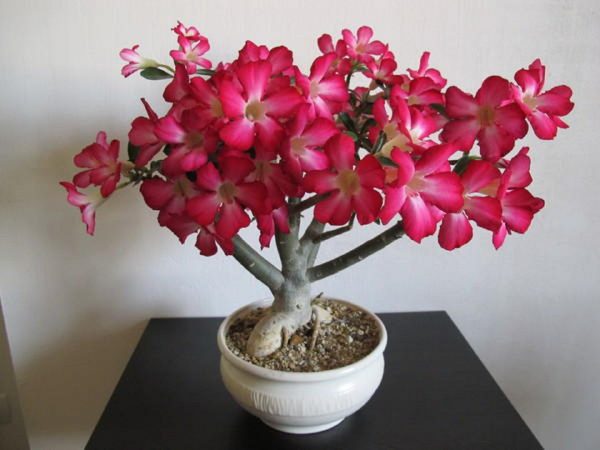
This is what adenium looks like
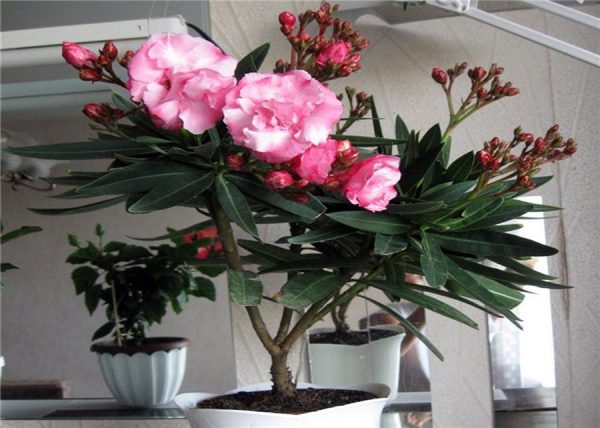
This is what an oleander looks like
It is native to Yemen, Saudi Arabia, South and Central Africa.
Photo of adenium in the wild
There, this slow-growing tree is called the “desert rose”, “impala lily”.
There are other names that highlight the beauty of flowers.
Just fabulous scenery, not a natural landscape.
There is only one species in the genus Adenium - adenium obese, which has several subspecies.
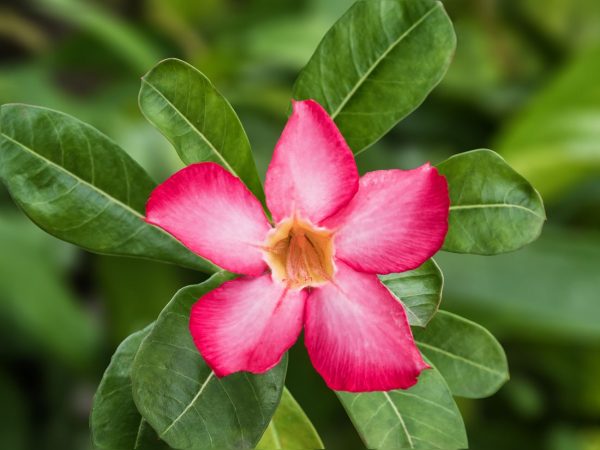
adenium-tuchnyj
The Bohemian subspecies has larger leaves.
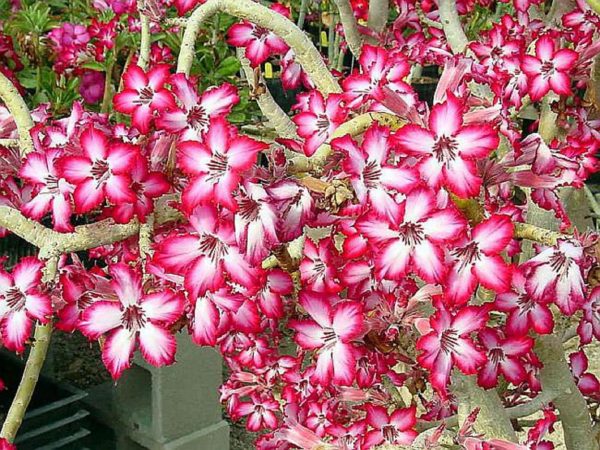
adenium mnogocvetkovyj
The multiflorous subspecies is distinguished by an abundance of flowers.

adenium somalijskij
And the Somali subspecies stands out for its very narrow lanceolate bluish-green leaves.
Blooming indoor adenium
Many varieties have been developed with white, white-pink flowers (simple and double), and creamy-green leaves.
So, if a flower comes in handy, you can put together a collection.
Adenium is a stem succulent, which is why it has a thickened stem base.
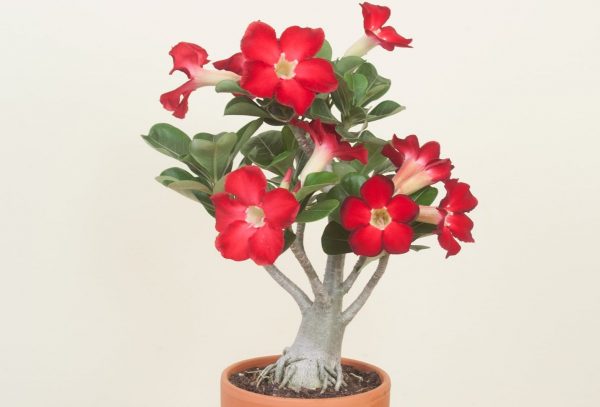
Blooming adenium at home
Much of this thickening may be underground.
It is the thick, bottle-shaped, highly branched trunk that gives the plant its exotic appearance.
The leaves of the plant are small, lanceolate, shiny or velvety. The flowers are large, from white to dark crimson. Their throat is often lighter in color.
Conditions of detention
In nature it grows up to three meters, but in a room it usually does not grow higher than 50-60: both the “non-tropical microclimate” and the limited volume of the pot have an effect.
Although, when bonsai-style specimens are grown from “desert roses,” they exist in even more cramped conditions. And nothing - they bloom.
The flower cannot be called whimsical if it is provided with good lighting. So a south window would suit him in the room. In the summer you can even take it out into the fresh air.
But you need to take into account that the stems of young plants can be damaged by direct sunlight, so they should be shaded.In summer, the temperature is quite favorable, plus 25-30 degrees.
In winter, to ensure some period of rest, a temperature of plus 12-14 degrees is recommended. A colder microclimate is not desirable: the leaves may turn yellow and fall off. Drafts are also dangerous for him. True, shedding of leaves can also be seasonal - in the fall.
In summer, water regularly (as the top layer of soil dries). But the plant does not like waterlogged soil. In winter, water rarely, especially in a cool room. At temperatures below plus 20 degrees in waterlogged soil, the thickened base of the stem may rot.
This can be understood by the falling leaves and softening of the stem at soil level. From spring to autumn, the flower is fed once a month with complex fertilizers for flowering plants (1 g per liter of water).
Transfer
Adeniums are replanted in the spring (once every two years) into a mixture of good garden and peat soil (2:1) or into a mixture of turf, leaf soil and coarse sand (1:1:1). The older the plant, the more turf soil is added to the mixture.
Add a tablespoon of complete mineral fertilizer and charcoal to a bucket of the mixture. Good drainage is required at the bottom of the pot.
The pots chosen are wide and shallow, and preferably light ones, so that the roots are less likely to overheat. After transplantation, the plant is not watered immediately, but after a day or two.
To form a beautiful crown, the shoots of adenium are slightly shortened at the beginning of the growing season, while not forgetting about the toxicity of the plant sap. For the same reason, the plant is kept away from children.
If desired, the plant can be formed in the form of a tree or in the form of a lush bush.
Reproduction
Adenium is most often propagated by cuttings cut in June-July.The cuttings, after treating the cuts with charcoal and drying them for 3-4 days, are planted in a mixture of peat and sand (1:1) or in perlite, or simply in water as in the photo below.
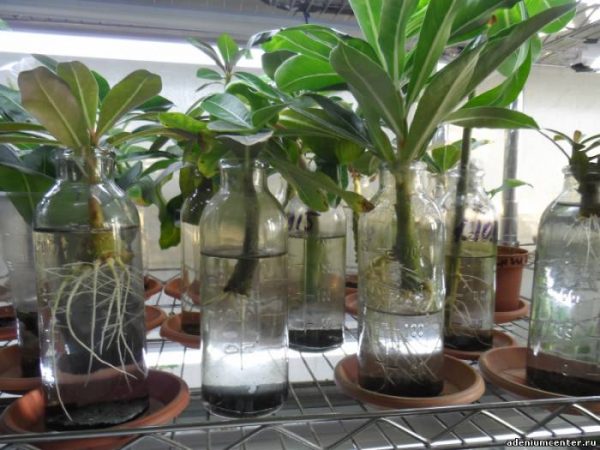
Rooting adenium cuttings in water
Optimal rooting conditions are plus 25-30 degrees, good lighting, slightly moist substrate. The cuttings take root in about a month.
Young rooted cuttings can bloom in the first year. True, plants grown from cuttings do not have thickened stems. Exotic specimens are grown from seeds.
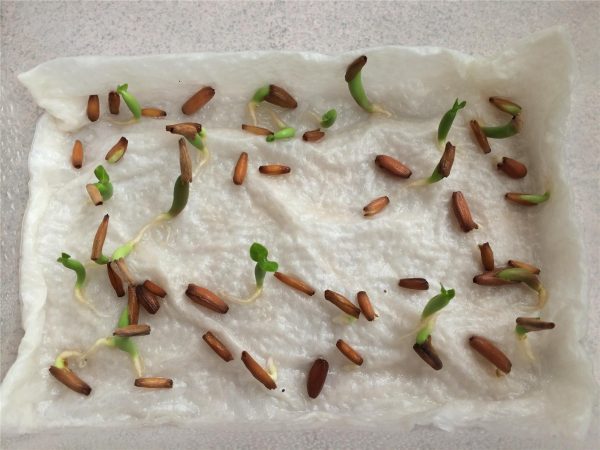
The photo shows sprouted adenium seeds
Seeds are sown in late winter-early spring, having previously been treated in a solution of a growth regulator (for example, in zircon). Sow in a substrate composed of vermiculite, sand and charcoal, without covering, only lightly sprinkling. In a hot place (plus 32-35 degrees), seedlings appear within a week.
The seedlings are given additional light and regularly ventilated, not allowing the temperature to drop below plus 18 degrees.

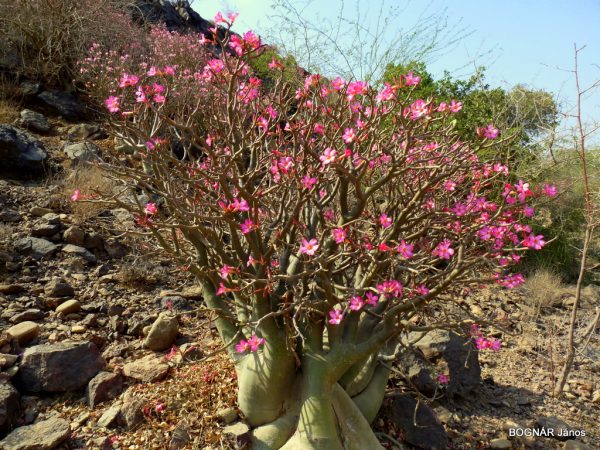
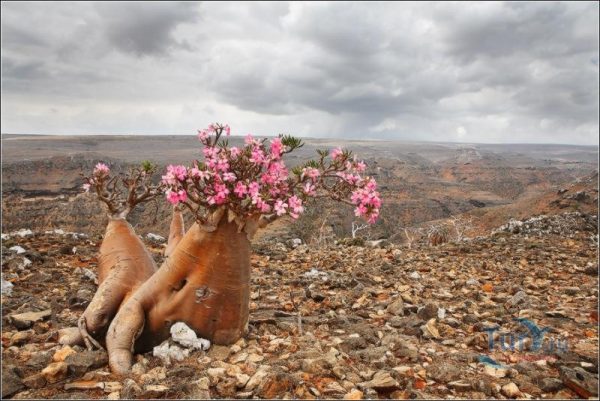
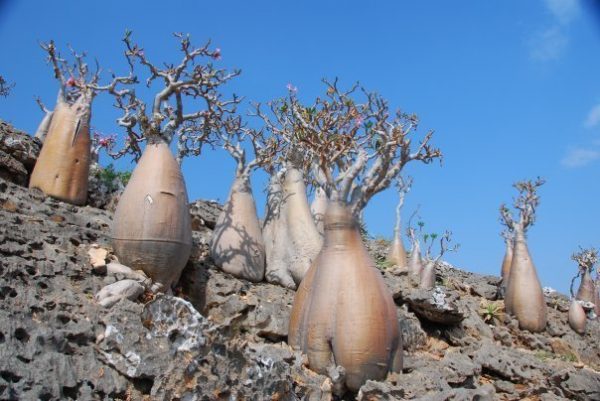

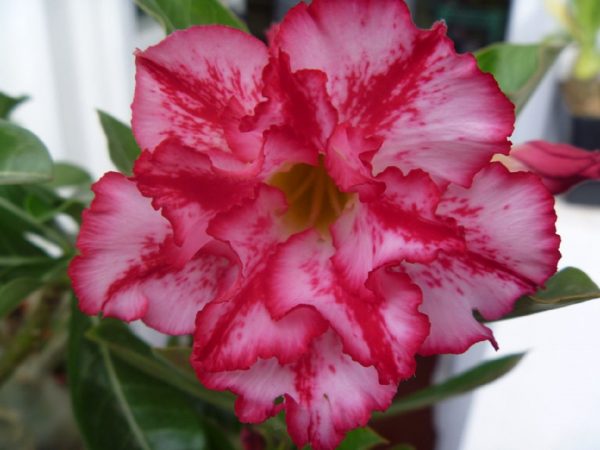
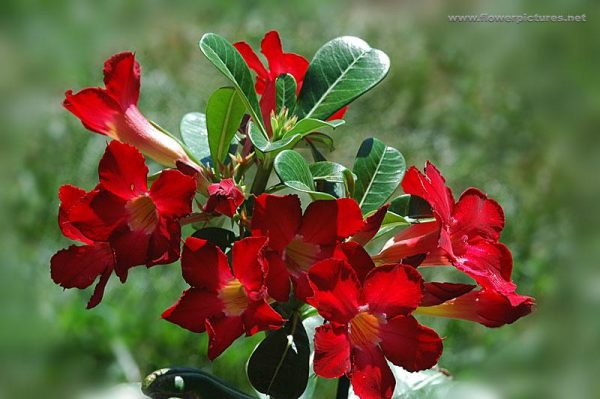
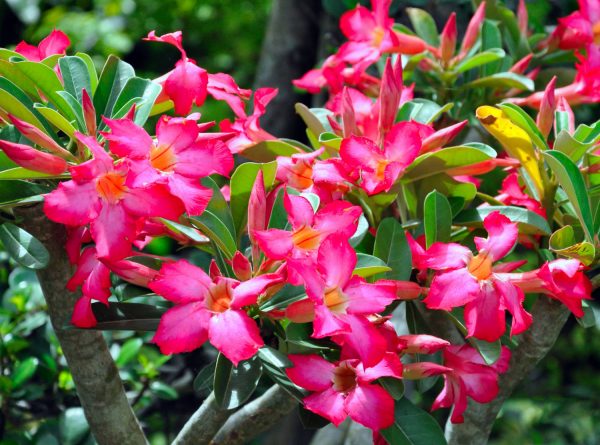
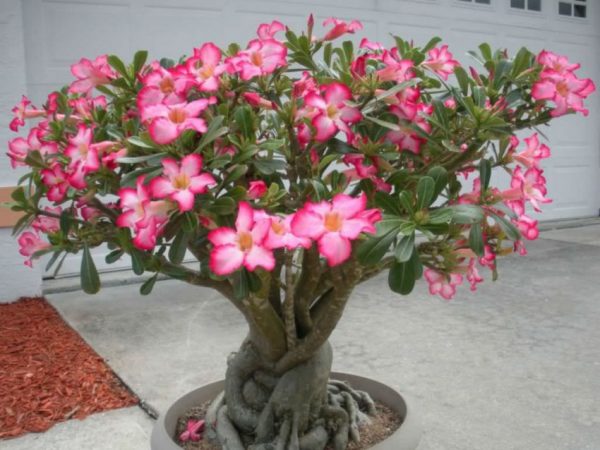
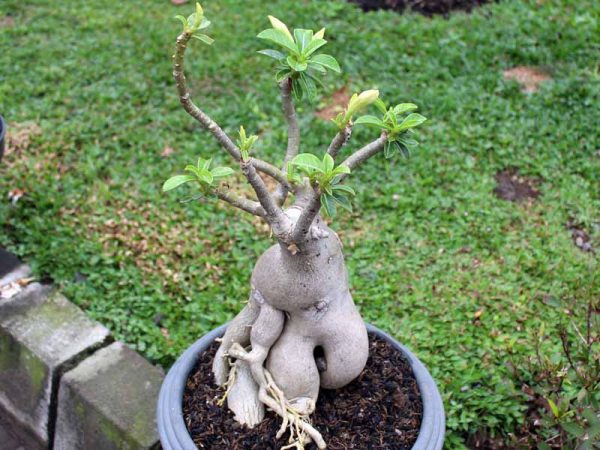
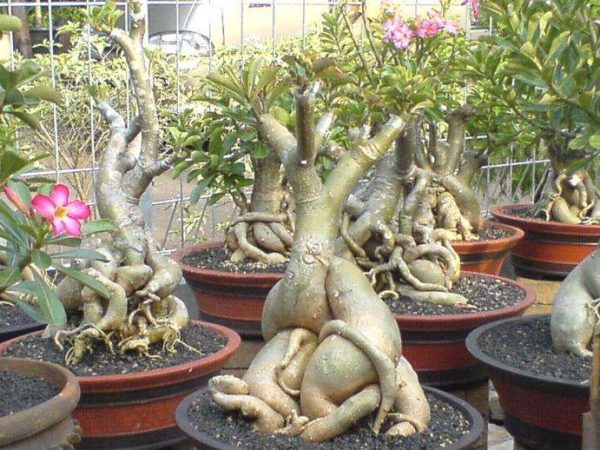
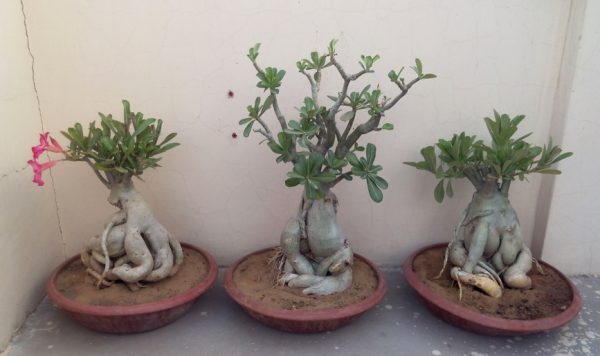
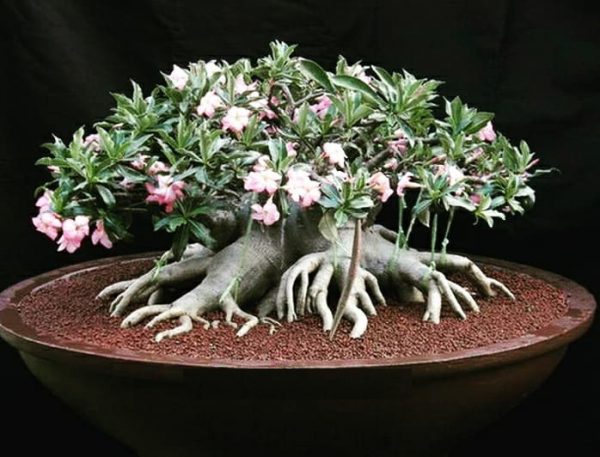
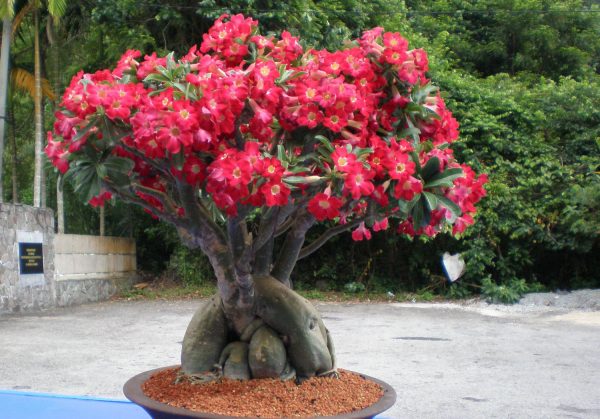
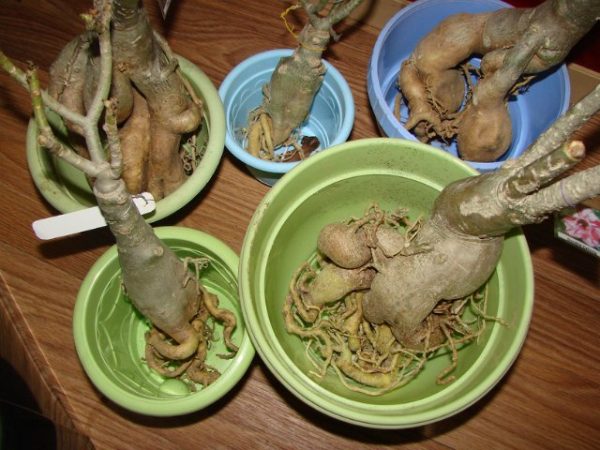
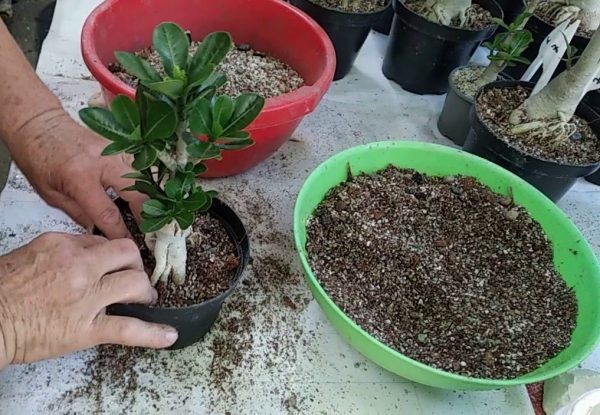

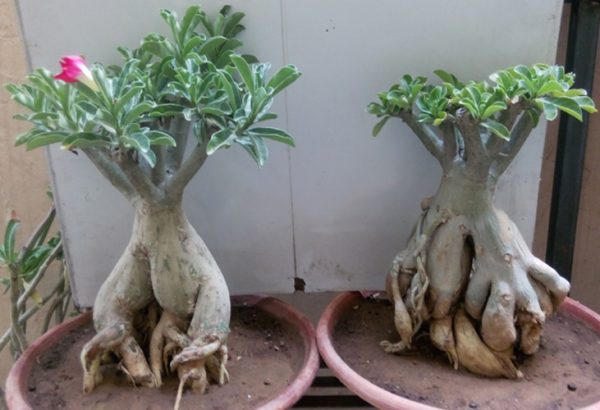
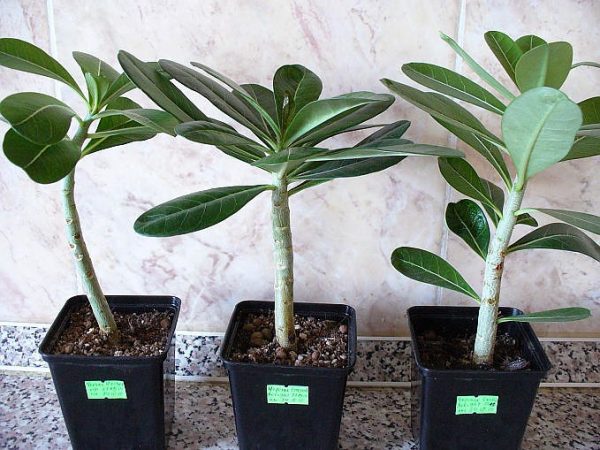
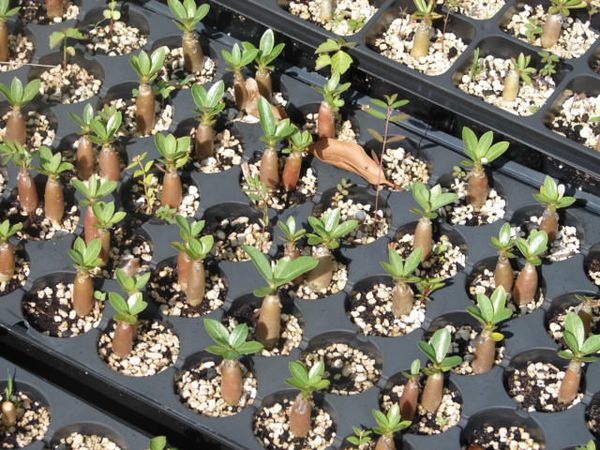
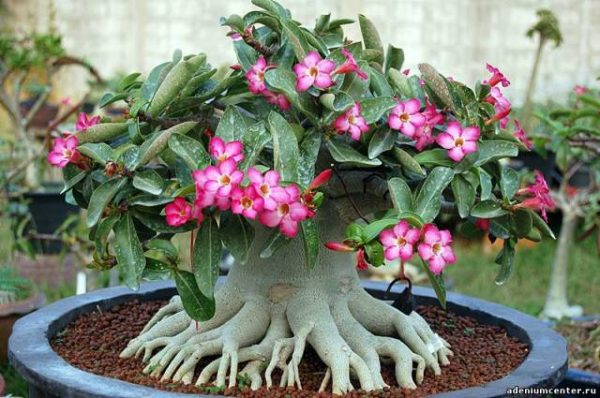



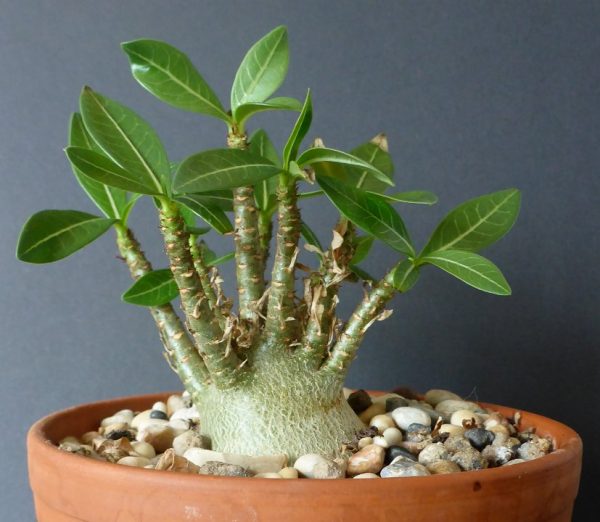
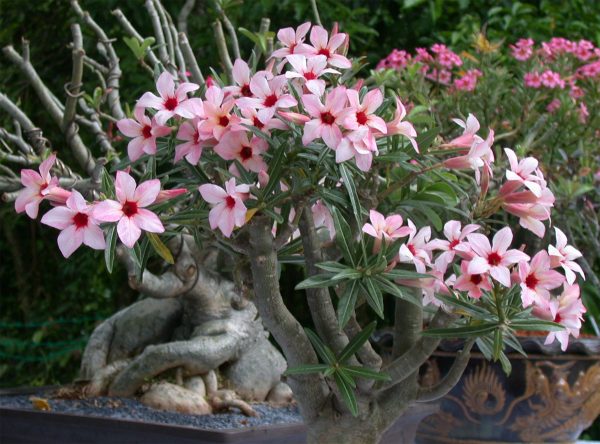
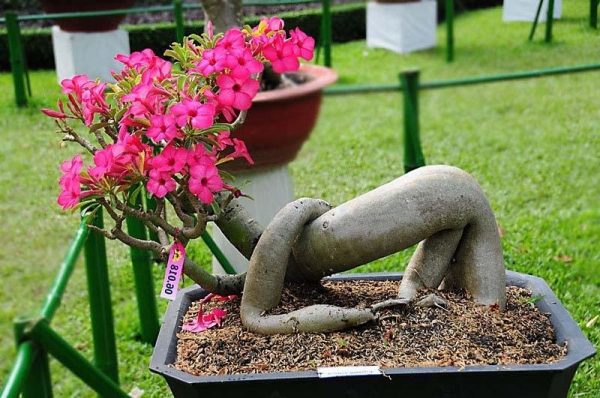
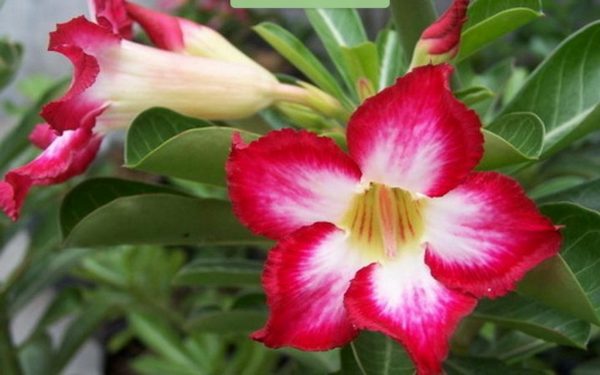
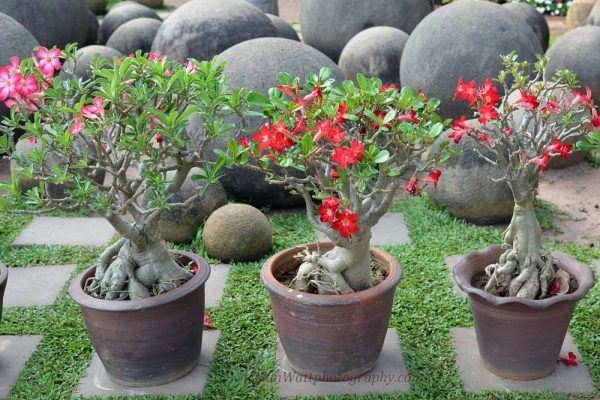
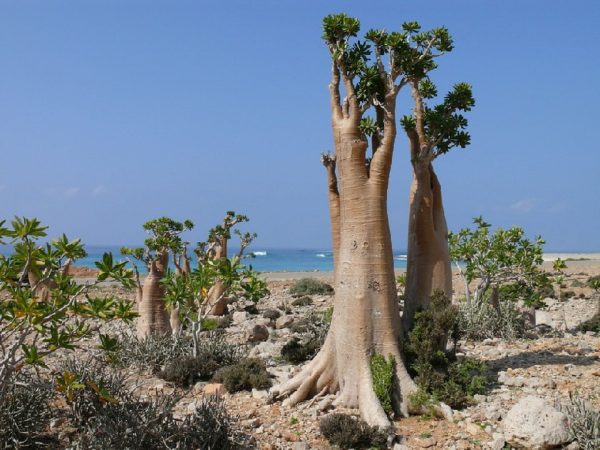
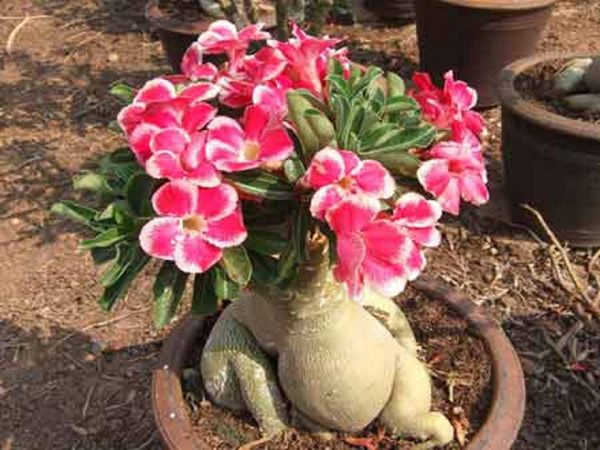
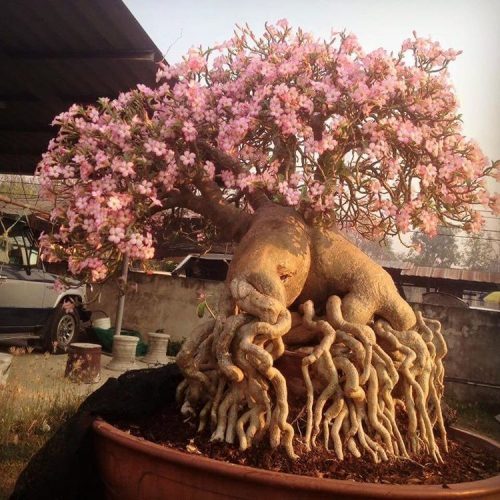

 CUCUMBERS NEVER GET SICK, I'VE BEEN USING ONLY THIS FOR 40 YEARS! I SHARE A SECRET WITH YOU, CUCUMBERS ARE LIKE THE PICTURE!
CUCUMBERS NEVER GET SICK, I'VE BEEN USING ONLY THIS FOR 40 YEARS! I SHARE A SECRET WITH YOU, CUCUMBERS ARE LIKE THE PICTURE! You can dig a bucket of potatoes from each bush. Do you think these are fairy tales? Watch the video
You can dig a bucket of potatoes from each bush. Do you think these are fairy tales? Watch the video
 How our fellow gardeners work in Korea. There is a lot to learn and just fun to watch.
How our fellow gardeners work in Korea. There is a lot to learn and just fun to watch. Eye trainer. The author claims that with daily viewing, vision is restored. They don't charge money for views.
Eye trainer. The author claims that with daily viewing, vision is restored. They don't charge money for views. A 3-ingredient cake recipe in 30 minutes is better than Napoleon. Simple and very tasty.
A 3-ingredient cake recipe in 30 minutes is better than Napoleon. Simple and very tasty. Therapeutic exercises for cervical osteochondrosis. A complete set of exercises.
Therapeutic exercises for cervical osteochondrosis. A complete set of exercises. Which indoor plants match your zodiac sign?
Which indoor plants match your zodiac sign? What about them? Excursion to German dachas.
What about them? Excursion to German dachas.